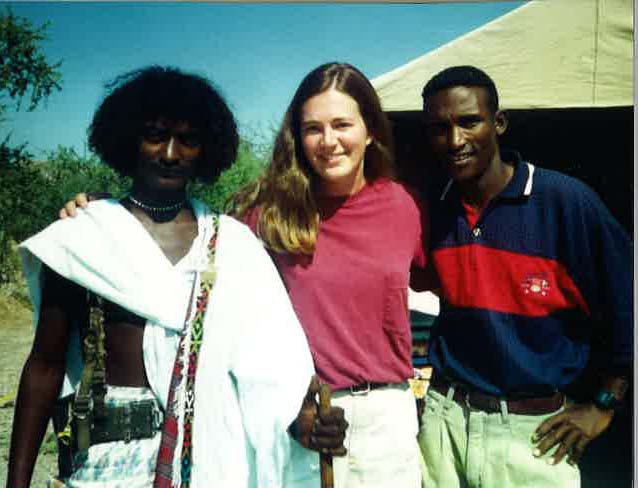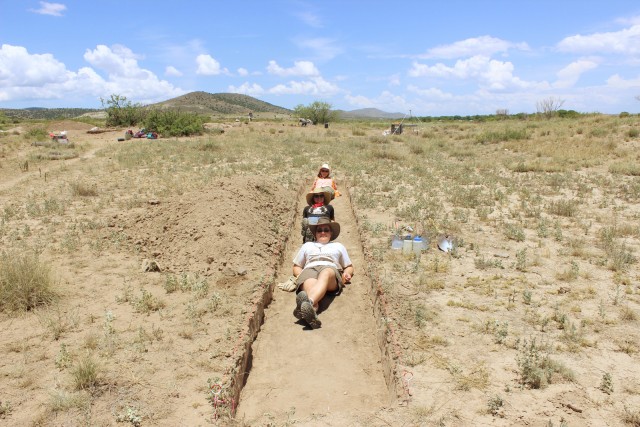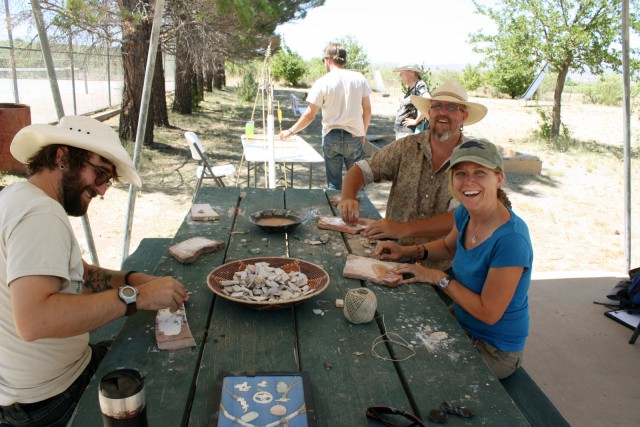- Home
- >
- Preservation Archaeology Blog
- >
- Other Archaeologists
Between now and October 17, 2015, Archaeology Southwest is participating in the Archaeological Institute of America’s celebration of International Archaeology Day (10/17/15) by sharing blog posts about why—or how—we became archaeologists. We hope you enjoy this very personal look at our staff members and the experiences that changed their lives. Today we feature Preservation Archaeologist Karen Schollmeyer, who co-directs our Preservation Archaeology Field School and is hard at work on two fascinating National Science Foundation-funded projects (here and here) that use existing archaeological collections.

(October 11, 2015)—I’ve been interested in archaeology ever since I can remember, but it wasn’t until my first college courses that I realized I could (or wanted to) do this for a living.
I grew up in Phoenix, Arizona, and spent my childhood camping and hiking in Southwestern landscapes where archaeological sites are easy to see, including visits to my grandparents’ house in Mule Creek, New Mexico. Family vacations farther away usually included trips to museums and archaeological and historic sites, where my mom diligently read the guidebooks and gave my brother and me the “good parts version.”
Although I was fascinated by those places, I didn’t know any archaeologists, and had very little idea of what they actually did. I even wrote an essay for a “career choices” assignment in middle school in which I concluded that I didn’t have the patience to become an archaeologist because I didn’t think I could handle “digging and digging but not finding anything.” (I do not, in fact, handle that very well, but luckily I’ve never had to do much of it. Those whose work involves shovel test surveys have my utmost respect!)
Like many people, I took my first archaeology course in college because it sounded interesting and filled lots of graduation requirements. Professor John Rick’s “Introduction to Prehistoric Archaeology” turned out to be the brightest spot in my freshman-year coursework, and convinced me to change my major to anthropology. This is a familiar story to many people, and a good reason for departments to keep great professors teaching some of their intro-level courses!
When my mom began expressing concern at my choice of a major with less obvious career prospects than some (she still didn’t know any archaeologists), I set about finding as many part-time jobs, internships, and field experiences as I could in order to change her mind. That strategy brought me to archaeology’s second major attraction (besides the inherently interesting subject matter): other archaeologists.
On archaeological projects, I found other people—especially other women—with a sense of adventure that matched my own, people who would rather visit Ethiopia than New York City, who would rather ride the bus carrying chickens than the one with reclining seats and TV screens, and whose answer to “want to spend six weeks living in a tent/shed/abandoned building in a place you’ve never been before?” was always “sign me up!”

I experienced the quick but intense “trench buddy” friendships that form when you’re trapped on a long, uncomfortable journey with a few other people, or work hard together in an isolated place. I finally experienced real teamwork, which the dreaded “group projects” before college had made me think was a myth. For the first time, I worked on projects in the field and in the classroom in which everyone contributed good ideas and lots of hard work, and I saw those efforts turn out much better than anything we could have done individually.

Time has caught up with me a little, and nowadays I’m less able to drop everything for an adventure (although I’m lucky to have a patient husband to hold things together at home when I do head for the field). The feeling of working on exciting research with good colleagues is still going strong, though. There’s nothing like the bizarre jokes that develop over weeks in the field, or writing a research paper with friends and realizing at the end that you have no idea who wrote which sections any more.

Archaeology’s insights into the many ways humans have found to structure our relationships with each other and the natural world are a big part of what keeps me excited about going to work most days, but it’s other archaeologists who make it so much fun.
One thought on “Other Archaeologists”
Comments are closed.
How gratifying that Karen paid attention while I read “the good parts” in all those museums. She told me while justifying her career choice that it was all my fault for taking her there!